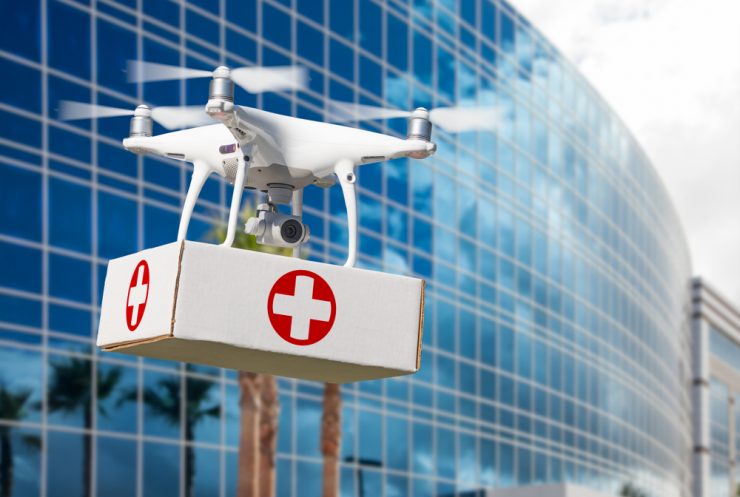SqwaQ Inc, based at the University of Texas at Dallas, USA, has announced it has “successfully demonstrated its patented airborne LTE drone communications technology for multiple partners. The technology enables drones, helicopters, air taxis and other connected aircraft to share the same airspace rather than being segregated. This eliminates the need for UTM (Unmanned Traffic Management) restrictions and resolves other obstacles that have been delaying wide-scale, routine UAS integration into the airspace.”
According to a company press release, rather than segregating or restricting drones, SqwaQ enables safe, unfettered integration into controlled airspace while also resolving Remote Aircraft ID, Pilot Credential Verification, Flight Path Management and other challenges that have limited UAS operations.
The press release continues:
“Easily integrated or retrofit into commercial UAS, the SqwaQboard is a compact, 3″ x 6″ x 1″ communication module weighing only 270 grams that aggregates six 3G/4G LTE connections into one, multi-redundant data pipe to broadcast four pilot view and downward cameras or sensors simultaneously, plus multi-redundant command and control (C2) and headroom for an array of avionics like Mode-S transponder, ADS-B in/out and VHF radio. These and more capabilities are already patented or patent pending.
“The SqwaQboard leverages the redundancy of communicating with multiple networks and towers simultaneously for more robust, redundant performance. Built to conventional AS9100 and DO-160 aviation safety standards, it is the first and only carrier approved device authorized for Airborne LTE Operations. The company worked with regulators and cellular network owners for over two years just to gain that access. As a result, SqwaQ can provision customized bandwidth services on 600 cellular networks across 130 countries and provide affordable roaming across entire regions like North America or the entire EU.”
The company says users can fly across wide spanning regions without losing connectivity because the six modules can roam across dozens of cellular networks simultaneously.
“SqwaQ can enable a remote pilot in New York to fly a properly equipped unmanned aircraft through controlled airspace in Los Angeles with the experience of actually sitting in the cockpit. Multiple pilot view cameras can be supported to stream live, 360 degree views around the aircraft as well as the normal downward cameras or sensors. Nationwide command and control has less than 1/2 second latency round trip. The remote pilot could even talk to air traffic control via an onboard VHF radio just like manned aircraft, enter the traffic pattern, Ident with Mode-S or ADS-B transponder as directed, and then land at LAX airport per ATC approval. To air traffic control, the experience would “feel” like any other manned aircraft routinely handled.”
For more information
(Image: Shutterstock/ Andy Dean Photography)




